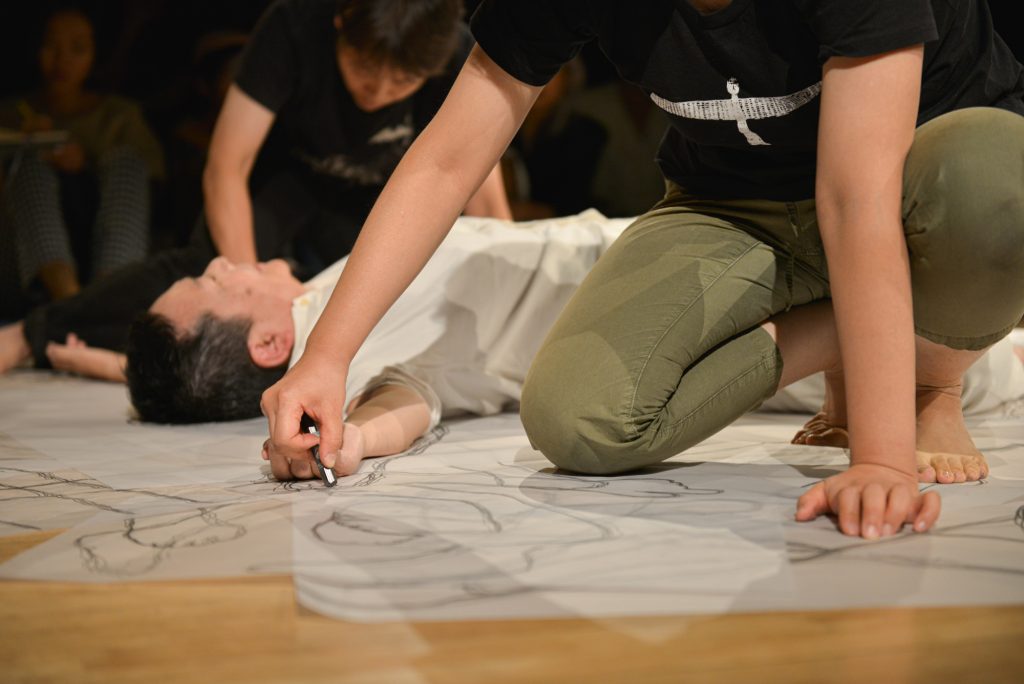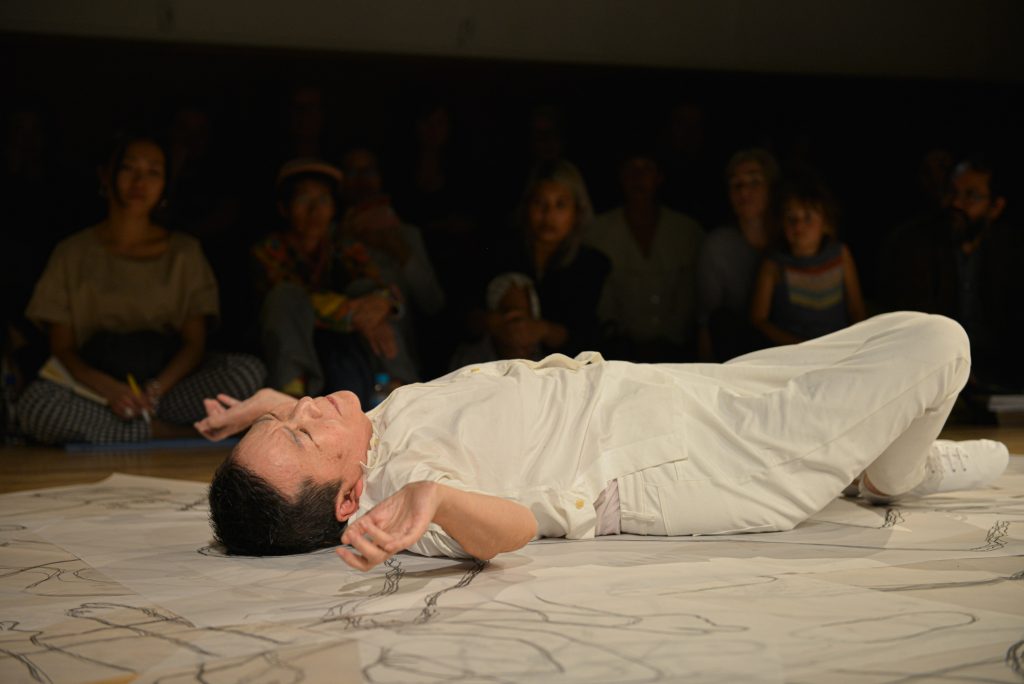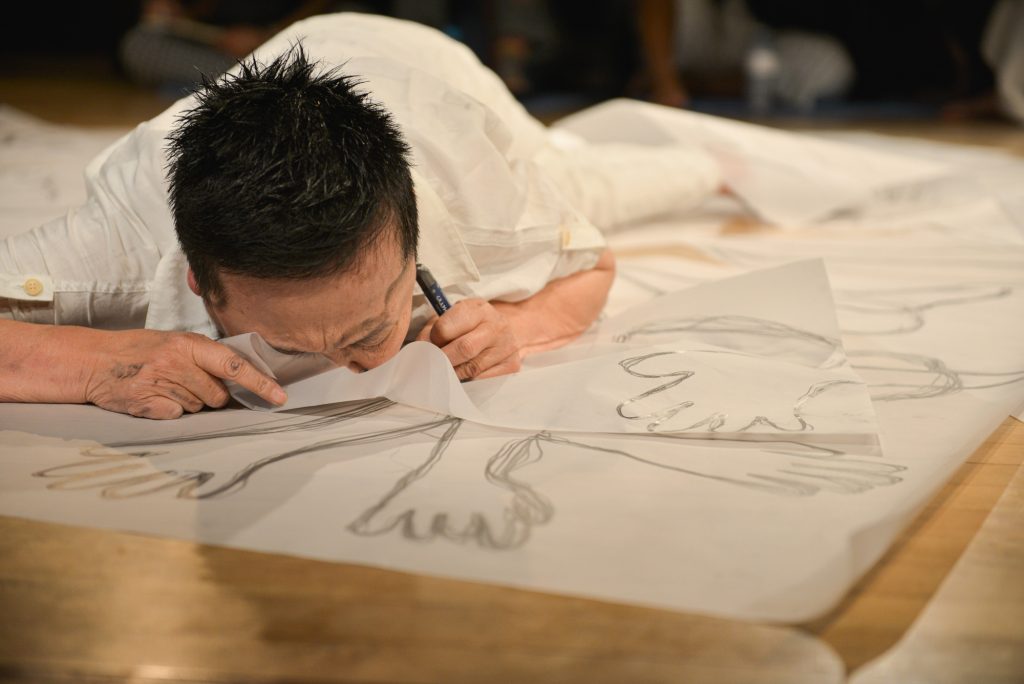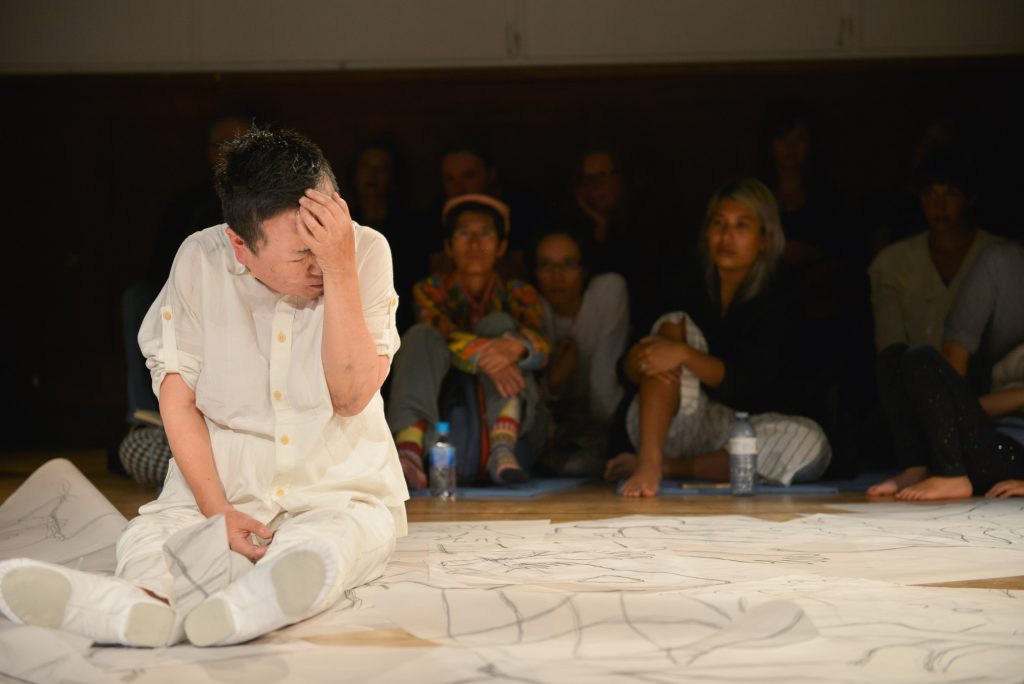Tari Ito’s Before the 37 Trillion Pieces Get to Sleep
In 1990, the activist and performance artist who was part of an important feminist movement in Tokyo, Japan — Tari Ito — performed The Memory of the Epidermis at Western FrontThe Memory of the Epidermis at Western Front in Vancouver as part of a nine-city Canadian tour. Nearly 30 years later, Tari Ito returned to Western Front on October 2, 2019 with her new piece, Before the 37 Trillion Pieces Get to Sleep.
Unfortunately, perhaps poignantly, the 37 trillion pieces and more may never rest for Tari Ito. Hands shaking, voice cracking, the artist projects a slideshow of photos and a video of her visit to an elementary school in Fukushima, the location of one of the world’s most devastating nuclear disasters. When the slides finish, the projector is left on. Ito, now in a wheelchair due to a motor neuron disease leading to muscle atrophy, moves towards and backwards from the projector, creating a sharp silhouette of her upper body on the white screen. In the meantime, she is speaking in a slow pace and with effort to find the right vocabulary to express her anguish. “There are so many sad stories in our country’s history,” she utters while her right hand periodically rubs and caresses her own face, gestures of devastation.

Then, with the help of her two assistants, Ito is carried to the floor where pieces of paper with hand drawn outlines of limbs, hands and feet on them are scattered. Ito lies down in a position that resembles a dead body outline. Her assistants begin to trace her outline with dark graphite pencils. They do so over and over again, so the outline becomes prominent, making this “crime scene” feel irrevocable, undeniably tragic, and endless. Ito changes to another position after a while. The realization that all the other drawings on the floor may have come from the same process is eerie; the new outline goes over the previous one. As Ito says in her artist statement, “These lines might be paths of ‘memories.’ I drown in the strings of ‘memories’ and lie down.”

After the assistants leave, Ito moves her body around, still lying down. She then sits up and begins to outline herself. The pencil eventually goes over her white trousers, face, and skull, as she utters noises of suffering that makes one wonder if they are the same noises that haunt her. She lies down once again, the sound of the papers crumpling refract around the room, bringing tears to the audience. The performance continues. The sadness goes on.


It almost feels wrong to recount these moments of this performance because they are so raw and heart wrenching. It’s as if one is watching years of profound sadness unfold, live. “Memory of the epidermis. Memory of the soul” is one of the last sentences Ito says during the performance. Tari Ito’s Before the 37 Trillion Pieces Get to Sleep is methodical, stirring, and so palpable that calling it simply “performance art” seems rather inadequate; Ito’s message transcends this or any category.
Review written by Katherine Chan / VANDOCUMENT
Watch curator Makiko Hara’s post-performance Q & A with Tari Ito.
This project was made possible by the Circle of Support: Maryon Adelaar, Beth and Bob Carter, Stephanie Holmquist and Mark Allison; assistants from Japan, Yayoi Mashimo and Kayo Shirakawa; and curator Makiko Hara. Thank you Western Front and EDAM Dance for the use of your space.
///
LIVE 2019 is September 28 – October 6, 2019. Find the full schedule is on our websiteour website and on our Facebook pageour Facebook page.
Find out what’s happened at LIVE 2019!
Sept 28 highlightsSept 28 highlights
Sept 29 & 30 highlights and looking ahead to the rest of the festSept 29 & 30 highlights and looking ahead to the rest of the fest
Oct 1 highlights: Do Not DisturbOct 1 highlights: Do Not Disturb
Keep following us on FacebookFacebook, InstagramInstagram, and TwitterTwitter – where you’ll find all the latest news about what’s happening and where to go to be part of LIVE 2019.
Tag your posts #livebiennale so we can like and share what you post <3
Join us, follow us, engage with us. Together we are LIVE.